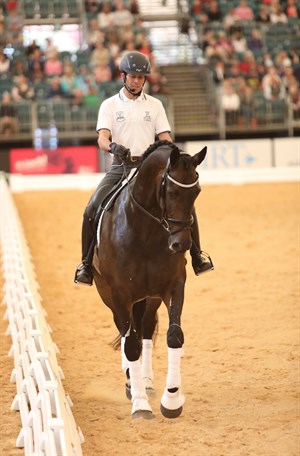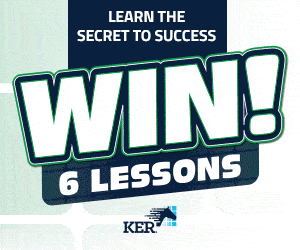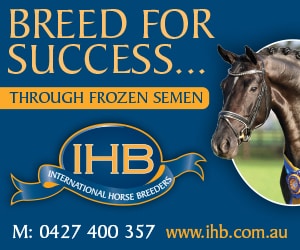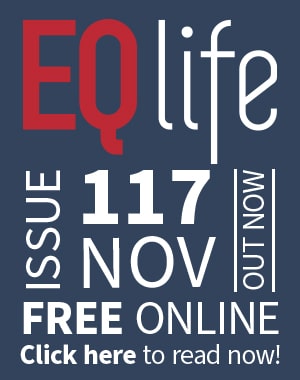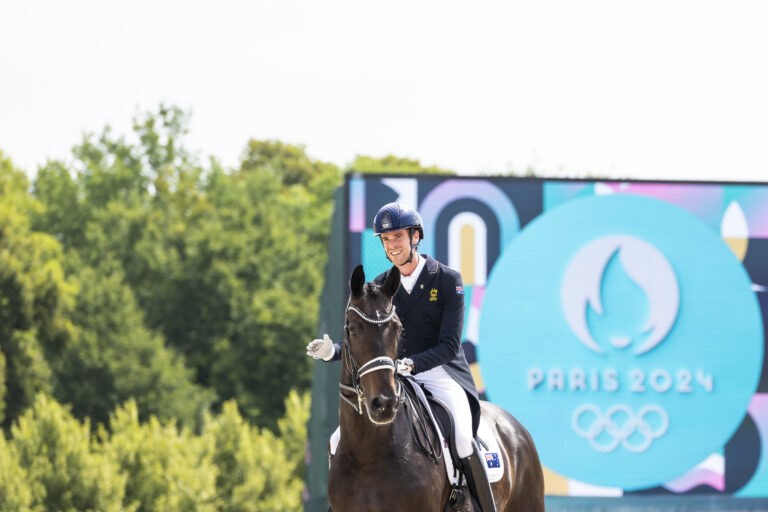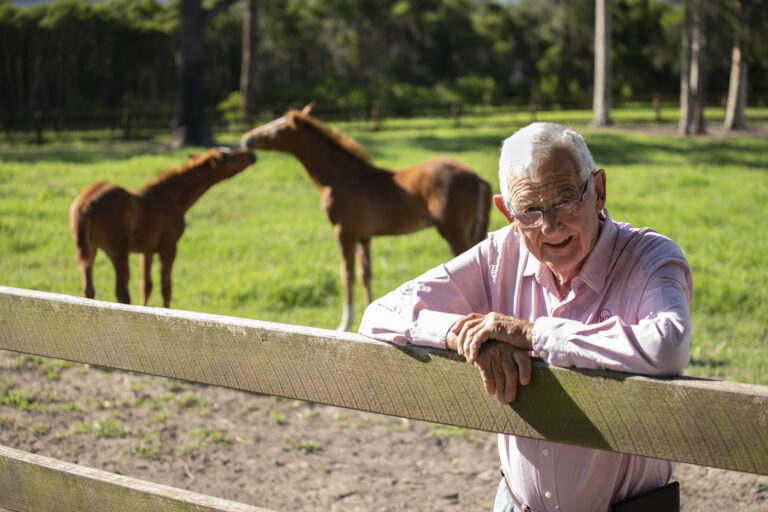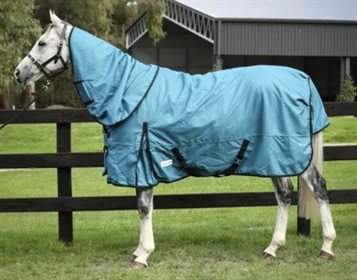Pedro Torres on Good Time
© Roger Fitzhardinge
By Roger Fitzahardinge
Pedro Torres is a World Champion Working Equitation specialist and trains using classical dressage principles and by establishing a respectful and kind relationship with his horse. His name is synonymous in Europe with harmonious, classical horse training.
His comments and lessons were inspiring. He rode all the horses with expertise and feel.
Justine Greer and Yarramee Fonzie
Pedro rode this four year old straight away and his super feelings were simple and clear, explaining very good principles: Hand without leg, and leg without hand. The legs create the energy and the reins capture the energy. Pedro worked a lot on the lateral suppleness with a lot of leg yielding, and to allow the freedom in the shoulders as the horse moves away.
Canter transitions are created in the corners with young horses. The first corner is best as if the balance isn’t good you have the second corner to adjust and correct. Always ridden to enjoy the feeling and then it can never be bad.
To slow down, no leg and ask with the reins and as soon as the response is light, its the most important. Pedro uses inside leg for the trot transition and then the outside leg for the canter transitions. He uses a lot of the “cluck” and the voice to encourage the horse. The horse learns from the voice to keep the movement. Always be light and in the natural balance, and never strong in the reins. Use the fingers to hold and encourage the horse to stay up and light. To slow down, only use the hands… and to go forward use the legs.
Pedro was very complementary towards the horse Fonzie for his attitude and trainability. If the horse gets heavy, he moves the bit left and right a little in the horses mouth and then light.
Emma Booth and Rolly
Emma is a Paralympian who is a paraplegic and confined to a wheelchair. She competed at the Rio Olympics and then also at Tryon, finishing in all classes in the top five very close to gaining a medal. Riding with two whips, Pedro treated her as any other rider but wanted the horse slow and light and not to run. Again, there was a lot of leg yielding exercises in the warm ups and often. Rhythm is always important and never let the horse run; enjoy the movement. It’s all about the harmony and the balance. Smiling is always important and the horses feel the energy and smiling and the enjoyment of the riding is about positive energy
In the canter collect, but always be as light in the contact as possible. Yielding the reins really shows the balance and it’s important to always help and give the reins to check the balance. Emma was really good at following the movement and in all three paces was able to show fantastic control. Walk to canter often, and forward and back, and Emma looked as at home in all movements as any Grand Prix rider Pedro has taught — and he as taught many Grand Prix riders. She is so talented and effective and it surely was the most amazing show of balance and lightness. Quiet amazing.
Pedro was so impressed they even went on to the flying changes. Pedro did often want the horse’s neck lower for the better balance and feeling of the horse. They even tried four tempi changes, and the beginnings of the canter pirouettes. In the end he encouraged Emma to ask for a little more energy and collection and it was truly very wonderful.
Jessica Greelish and Good Time
Pedro is obviously a good times guy and his passion and love of horses was obvious. Good Time is a Medium/Advanced horse and very tall. His immediate reaction was to say that the horse was tense and he explained about gaining the confidence and trust of the horse. He always starts the someway and introduces his legs against the ribs and also reins to the mouth, and the skeleton cannot move if the muscles are tense and so in the start it’s important to get the muscles to release; you can then affect the joints and the skeleton. You do not need to be strong. You have to have good timing.
Pedro rides a lot with his eyes closed and this wakes up all the riders senses and so you get to feel what is going underneath the rider. He insists and reiterates that the hands say stop and the reins mean stop. If you bend left, you have to give the right and visa versa.
If riding is a dance; you need to learn the steps and take time and be very slow. Slow him with the reins and then ride forward from the leg. Never together. Until the horse is in balance you cannot put any flash and expression into the work. Slow, easy and relaxed from the beginning and help him find the balance… SLOW!
Inside rein up in the flexion and to stop the nose tilting. If you ride too fast, you are away from Grand Prix piaffe or canter pirouettes. When there is too much power in the hands, you cannot get the hind legs to take the weight. In the canter left, the horse needed more freedom of the right shoulder and so the flexion to the outside to help this. This exercise helps to open the shoulder, then leg yielding. The deeper frame helps the control and the balance. To go sideways, simply use the outside leg by itself.
Riding is a dance and you must always dance to the same music… and to finish the programme Pedro put together a wonderful moving freestyle. The man is beautiful, as is his love of the horse
READ THE LATEST NEWS ARTICLES HERE

